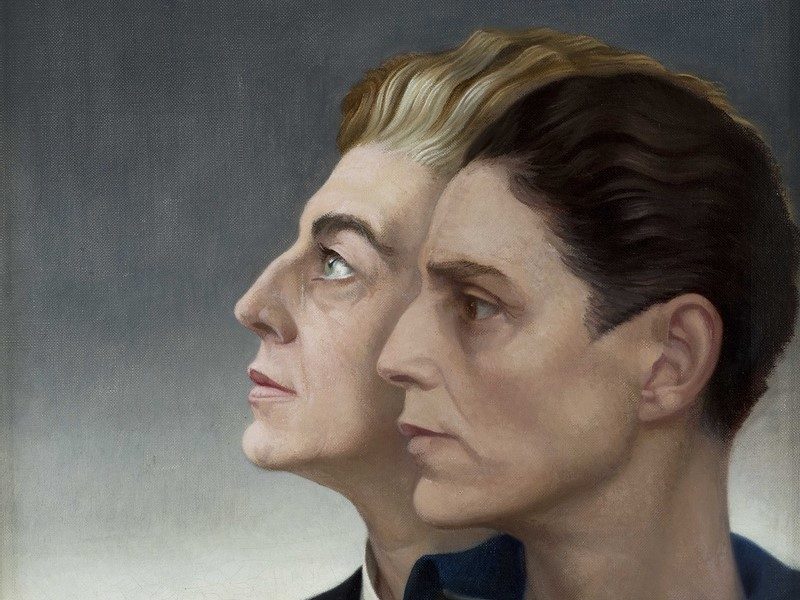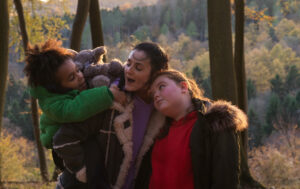Women Artists: A Conversation and Gluck at the Fine Art Society

The Fine Art Society, known for being prolific when it comes to exhibitions, are simultaneously displaying not one, not two, but three sets of works celebrating historical and contemporary female artists.
Their revisit to the pioneering, often rebellious lesbian British artist Gluck (1895-1978) is timely given assessment and celebration of how far we have come on LGBT issues, now high on the agenda for the 50 year anniversary since the Sexual Offences Act 1967. Hannah Gluckstein, born into an elite British family, broke boundaries on the perception of women through her personal life and work; by the age of 23 she was going by the non-gendered name of Gluck (“no prefix, suffix, or quotes”), wearing men’s clothing and a cropped haircut, smoked a pipe and was involved in a number of high-profile lesbian affairs. This in-depth retrospective, the third presentation of her work at the gallery since 1937, features 32 landscapes, portraits and floral studies, displayed beautifully in distinctive stacked frames, including famed piece Medallion (1937) depicting Gluck in a double portrait with her lover Nesta Obermer. Inspired by a night Gluck spent with the American socialite at the opera, the picture was referred to by the artist as “YouWe”, reflecting the impact of the two sharing in the music together. Her unique and varied style is held in atmospheric pieces such as Baldock vs Bell at the Royal Albert Hall (1927) of a boxing match, Before the Races, St Buryan, Cornwall (1924) and a portrait of Ernest Thesiger, (1925-26). Portrait of Miss Watts (1932) is one of a number of portraits of glamorous women of the time while Credo (Rage, Rage Against the Dying of the Light) (1970/3), produced later in her life, darkly evokes death and decay.
The Society have then displayed a range of work by contemporary female artists, allowing such pieces to be in dialogue with Gluck’s: building on, further exploring and contrasting her representations of women. Ironically, forthright Gluck objected to combined exhibitions, preferring to show solo, and resisted categorisation as a “female” artist (she quit one society for being referred to as Miss Gluck). Indeed, their approach of inviting 12 artists to respond to her legacy, resulting in a diverse range of works, emphasises the plurality of artforms and styles female artists can and do produce and challenges the very premise of a collective identity. Among the highlights are Phoebe Boswell’s brilliantly current Instagram-inspired portraits; Eileen Cooper’s stylised Night Music (2015); Jennifer Durrant and Vanessa Jackson’s colourful abstract pieces; Annie Morris’s Van Gogh-esque Flower Head I (2016) and precarious-looking tower sculpture in the foyer Stack 10, Ultramarine Blue Light (2016); Ishbel Myerscough’s superbly naturalistic prepubescent Girl (2016); and Caroline Walker’s peek into a dressing room Study for Separates II (2015).
On the top floor are a set of intriguing and stunning lithographs from Ethel Gabain (1883-1950), an Official War Artist in the Second World War. First published in 1906, her works focus on themes of femininity and domesticity through their depictions of women, as well as the camaraderie and bravery of the war’s British women workers she was tasked with representing. The images of women inhabiting private spaces feels intimate and the medium of lithography allows a uniquely detailed yet “barely there” quality, as if peering in through a keyhole back into the past to a sketched representation of women rarely seen in mainstream art or in the public sphere, such as a disrobed woman in The Striped Chair (1914), a sassily smiling back alley pair in L’Aube (1921) and a new vision of femininity in Captain Pauline Gower of Women’s Air Transport Auxiliary (1941).
Whether a fad or a genuine marked shift in the art world to pay more attention to greater diversity, particularly around gender, such exhibitions are certainly part of a growing trend. Here, beyond simply gathering together female artists’ work, something far more interesting is prompted by putting representations of women into dialogue with one another, opening up space for new, evermore nuanced and innovative interrogations of our perceptions of gender.
Sarah Bradbury
Women Artists: A Conversation and Gluck are at The Fine Art Society from 6th until 28th February 2017, for further information visit here.
























Facebook
Twitter
Instagram
YouTube
RSS